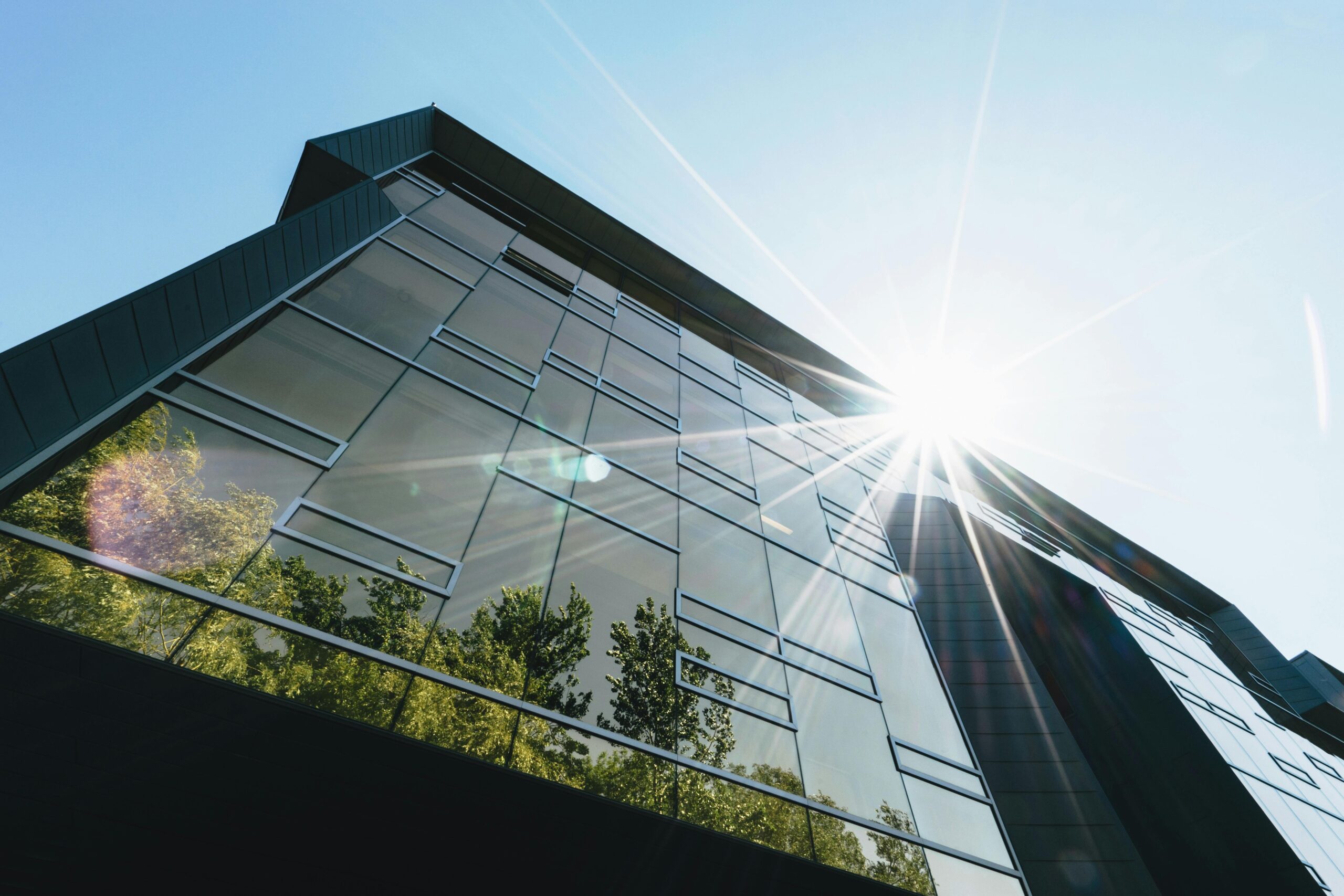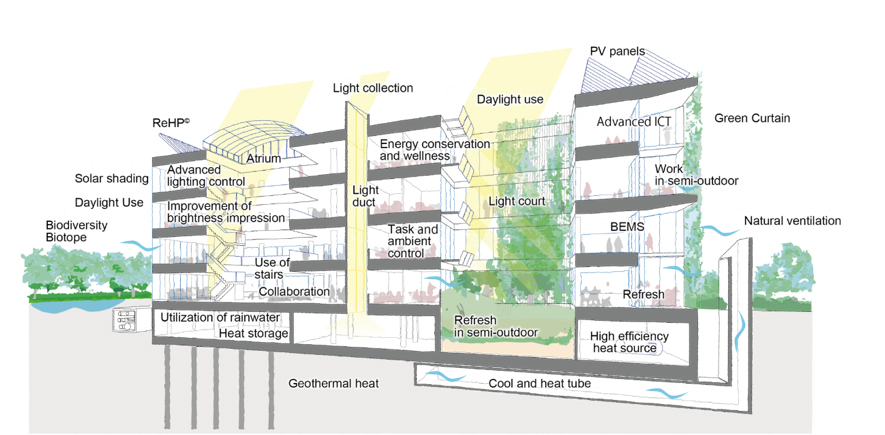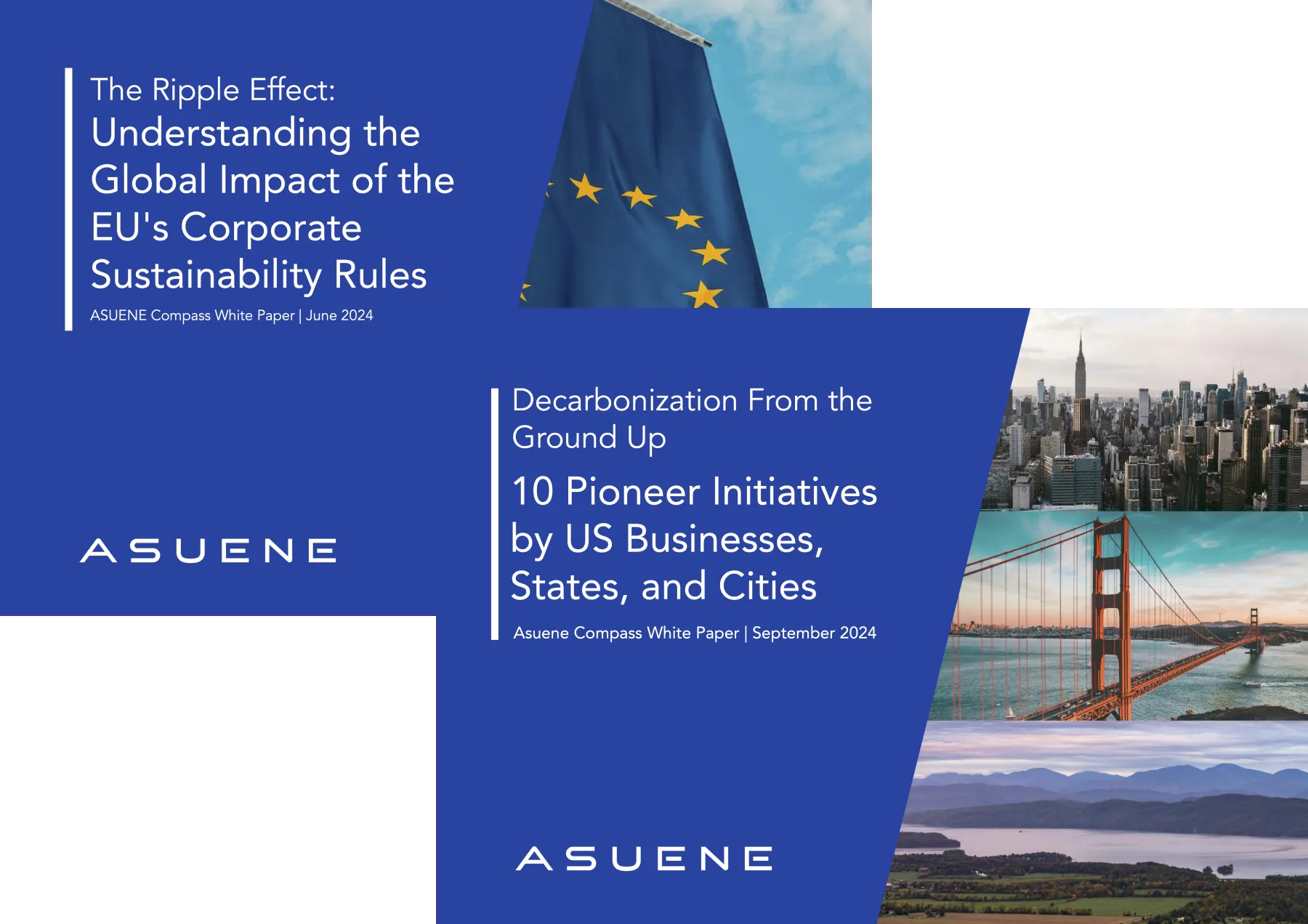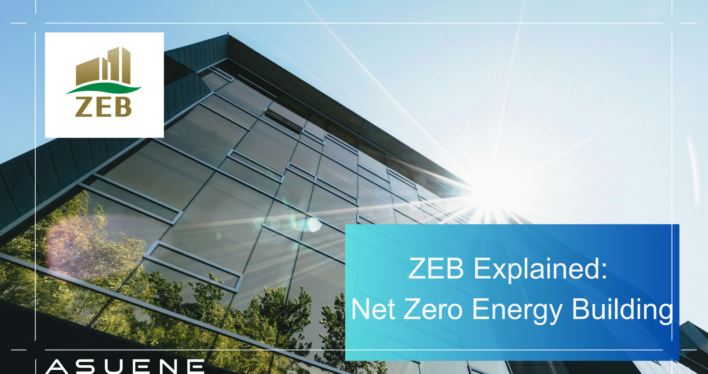- Article Summary
-
Overview
In recent years, as the importance of combating global warming has increased, the building sector is also being called upon to improve energy efficiency and achieve decarbonization. Among these efforts, ZEB (Net Zero Energy Building) has gained significant attention as an innovative building concept that aims to substantially reduce energy consumption and achieve a net-zero annual primary energy balance by utilizing renewable energy sources.
This article provides a comprehensive explanation of ZEB, covering everything from its fundamental concepts, the benefits of implementation, and the latest technologies to real-world examples.

What is ZEB?
Net Zero Energy Building (ZEB) is designed to minimize energy use as much as possible, while covering the remaining energy needs through renewable sources such as solar or wind power, achieving a net-zero energy balance annually. Essentially, the goal is to balance the “energy consumed” with the “energy produced,” thereby reducing environmental impact.
About ZEB Certification
ZEB (Zero Energy Building) Certification is a system that evaluates and recognizes buildings based on their energy efficiency and ability to achieve net-zero energy consumption. It assesses how well a building minimizes energy use through advanced technologies and design, as well as its capability to offset energy consumption with renewable energy sources.
There are four stages of ZEB certification:
| Certification Type | Energy Efficiency Standards | Key Features | Renewable Energy Requirement |
| ZEB | 50%+ reduction without renewable energy, 100%+ reduction with renewable energy. | Highest energy efficiency, enables energy self-sufficiency | Required |
| Nearly ZEB | 50%+ reduction without renewable energy, 75%–100% reduction with renewable energy. | Near ZEB-level performance, significant reduction with renewable energy. | Required |
| ZEB Ready | 50%+ reduction without renewable energy | No need for renewable energy systems, high energy efficiency through building design | Not Required |
| ZEB Oriented | For large-scale buildings, enhanced envelope and efficient systems | Easier to adopt than ZEB Ready, renewable energy is optional | Not Required |
These types aim to achieve ZEB in stages according to the scale, purpose, and regional characteristics of the building. The energy-saving performance increases in the order of ZEB > Nearly ZEB > ZEB Ready > ZEB Oriented.

Background and Necessity of ZEB
In recent years, reducing greenhouse gas emissions has become a global priority in efforts against climate change. Buildings account for a significant portion of society’s overall energy consumption, making energy reduction in this sector crucial for climate change mitigation. Consequently, promoting ZEB (Net Zero Energy Building) is anticipated to substantially contribute to greenhouse gas reduction.
Three primary factors are driving the adoption of ZEB:
- Climate Change Mitigation: Buildings consume vast amounts of energy and resources during construction and operation, resulting in significant CO₂ emissions and waste. Improving energy efficiency and reducing emissions in the building sector is therefore essential for addressing climate change.
- Enhanced Energy Efficiency: ZEB utilizes technologies such as high-performance insulation, efficient solar panels, and heat pumps to dramatically reduce energy consumption. This prevents energy waste and enables sustainable operations.
- Utilization of Renewable Energy: Actively incorporating onsite and offsite renewable energy sources helps reduce reliance on fossil fuels and facilitates the shift toward clean energy.
Main Objectives of ZEB
- CO₂ Reduction: By utilizing renewable energy, ZEB aims to reduce environmental impacts and support the realization of a sustainable society.
- Energy Savings: High-efficiency equipment and effective energy management minimize waste and reduce operational costs.
- Preparation for the Future: ZEB is a crucial step toward achieving a low-carbon society, significantly reducing environmental impact for future generations.
Global ZEB Examples
Globally, the European Union is leading with mandatory “nearly ZEB” standards, while Japan and South Korea are accelerating adoption through government-led roadmaps and subsidies; in the United States, state-specific goals and NGO support are driving progress, and Australia is expanding carbon offset standards to promote ZEB implementation.
| Country/Region | Policy | Goal | Features |
| European Union (EU) | Introduced the definition of “nearly Zero-Energy Buildings (nZEB)” in the 2010 revision of the Energy Performance of Buildings Directive (EPBD, 2010/31/EU). | – 2018: All new public buildings must be “nZEB”. – 2020: All new buildings must be “nZEB”. | Flexible standards for each member state. |
| Japan | Promotion of ZEB based on government policies and roadmaps. | – 2020: Achieving ZEB for new public buildings. – 2030: Achieving ZEN for new commercial buildings. | Funding for pilot projects |
| South Korea | Adopted the “Activation of Zero Energy Buildings” policy in 2014. | – Utilized pilot projects and subsidies. | Implemented a roadmap and financial support. |
| United States – California | State-specific energy policies aimed at achieving ZEN. | – 2020: Achieving ZEN for new residential buildings. – 2030: Achieving ZEN for new commercial buildings. | Support from NGOs (such as NBI and Architecture 2030). |
| Massachusetts, USA | State-Specific Policies Aiming for ZEB Goals | Same as California | Same as California |
| Australia | Green Building Council of Australia (GBCA) Expands NCOS | – Achieving Zero Emission Buildings and Districts. | Strategies Utilizing Carbon Offsets |
Advantages of Implementing ZEB (Zero Energy Building):
・Increased Value: Property values rise, improving competitiveness.
・Cost Reduction: Enhanced energy efficiency reduces long-term operational costs.
・Educational Impact: Deepens understanding of energy efficiency and technology, raising occupants’ awareness about energy conservation.
・Greenhouse Gas Reduction: Reduces dependence on fossil fuels, contributing to a sustainable society.
Challenges and Solutions in Implementing ZEB:
High Initial Costs: Implementing high-performance equipment and technologies typically results in higher upfront costs.
・Countermeasures: Utilize subsidies and tax incentives, and consider lifecycle costs.
Requirement for Technical Knowledge: Achieving ZEB requires specialized knowledge and technical expertise.
・Countermeasures: Seek expert advice and gather information about ZEB.
Complexity of Design and Construction: Advanced design and construction techniques are necessary to achieve ZEB.
・Countermeasures: Collaborate with skilled designers and construction professionals.
Although implementing ZEB involves initial costs and technical challenges, appropriate measures can overcome these obstacles, significantly contributing to a sustainable and prosperous society. Enhancing understanding of ZEB and promoting collaboration between the public and private sectors is crucial in protecting our global environment and securing a better future for generations to come.

Why Not Work with ASUENE USA Inc.?

When it comes to navigating complex climate disclosure requirements, it is crucial to have the right tools and expertise on your side. That’s where ASUENE USA Inc. comes in.
Carbon Accounting: Our advanced software solutions automate emissions tracking across Scopes 1, 2, and 3, integrating with existing ERP systems to reduce manual data entry errors. Proprietary algorithms align with GHG Protocol standards, ensuring compliance with ESG reporting mandates.
Third-Party Verification: ASUENE’s network of accredited auditors provides ISO 14064-compliant verification services, a critical step for companies seeking to validate their disclosures.
By partnering with ASUENE USA, businesses can transform regulatory obligations into strategic advantages, enhancing sustainability performance while minimizing compliance costs.
So, why not partner with us to streamline your reporting and environmental efforts? Let ASUENE USA Inc. help you stay ahead of the curve while making a positive impact on both your business and the planet.
Talk to us today for your sustainable transformation!
Source
- https://palebluedot.llc/net-zero-energy-guidelines
- https://sftool.gov/plan/420/net-energy-building
- https://www.gbrionline.org/zero-energy-building/
- https://www.seda.gov.my/energy-demand-management-edm/zeb-renovation-for-existing-buildings/
